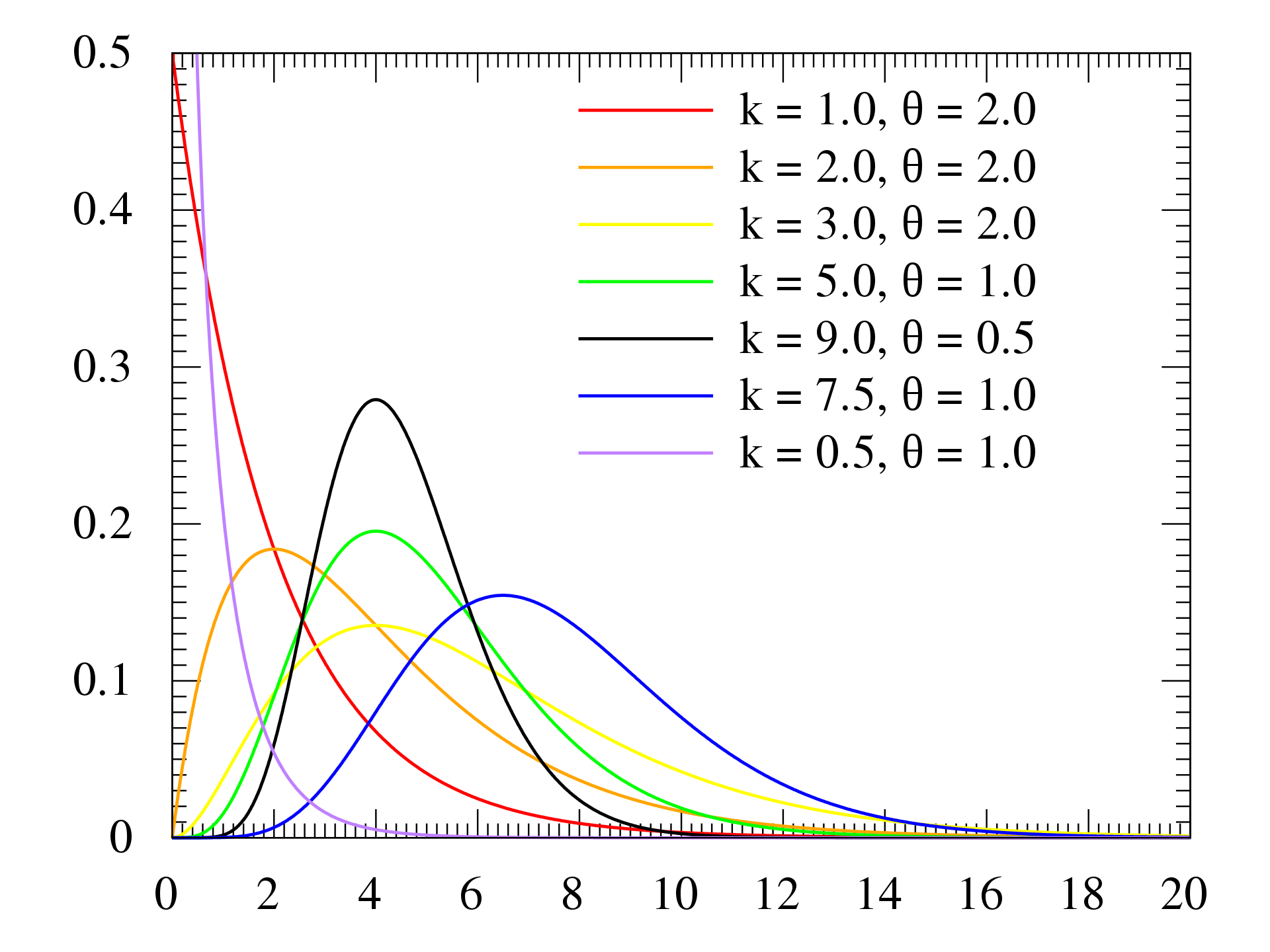Gamma distribution¶
Gamma distribution can be viewed as the total waiting time, till we reach \(a\) successes. It generalizes the Exponential r.v, where the Exponential r.v is the waiting time for the first success under condition of memorylessnes. We can view the Gamma distribution as a sum of i.i.d Exponential r.v.s. Of we can see the Gamma as the continuous analog of the Negative Binomial distribution.
PDF¶
In terms of shape \((k)\) and scale \((\theta)\)
In terms of shape (\(\alpha\)) and rate (\(\theta\))

Properties¶
the shape parameters defines the number of events (thus it can be any positive number)
shape values less than 1, Gamma distribution has a mode of 0
shape value equal to 1, gamma distribution is equivalent to exponential distribution
shape values greater than 1, the distribution becomes increasingly more symmetrical and approaches a normal distribution when the shape parameter is large.
The scale and rate (rate = 1/scale) parameter defines how often (scale) and rate at which events are expected to occur
The variance is proportional to the mean (variance = scale/mean, variance = mean^2/ shape)
Sum of 2 Gamma distributions¶
If 2 or more gamma distributions have the same rate \(\alpha\)
\(X \sim Gamma(a, \lambda)\)
\(Y \sim Gamma(b, \lambda)\)
Then we can define the sum of 2 or more as:
Connection to Exponential distribution¶
And since there is a connection between the Exponential and Gamma:
Connection to Beta distribution¶
\(\Gamma\) is the gamma functiin
Connection to Normal distribution¶
Gamma distribution can be used as an alternative to Normal distribution when data (residuals) are skewed with a long right tail, when there is an relationship between mean and variance.
It is a conjugate prior for the variance of a normal distribution.
Erlang distribution¶
Parameter \(a\) is a integer, which is commonly fixed yielding a one parameter Erlang distribution, $\(Erlang(x| \lambda)= Ga(x| 2, \lambda)\)$
fix \(a = 2\))
\(\lambda\) is the rate parameter.
